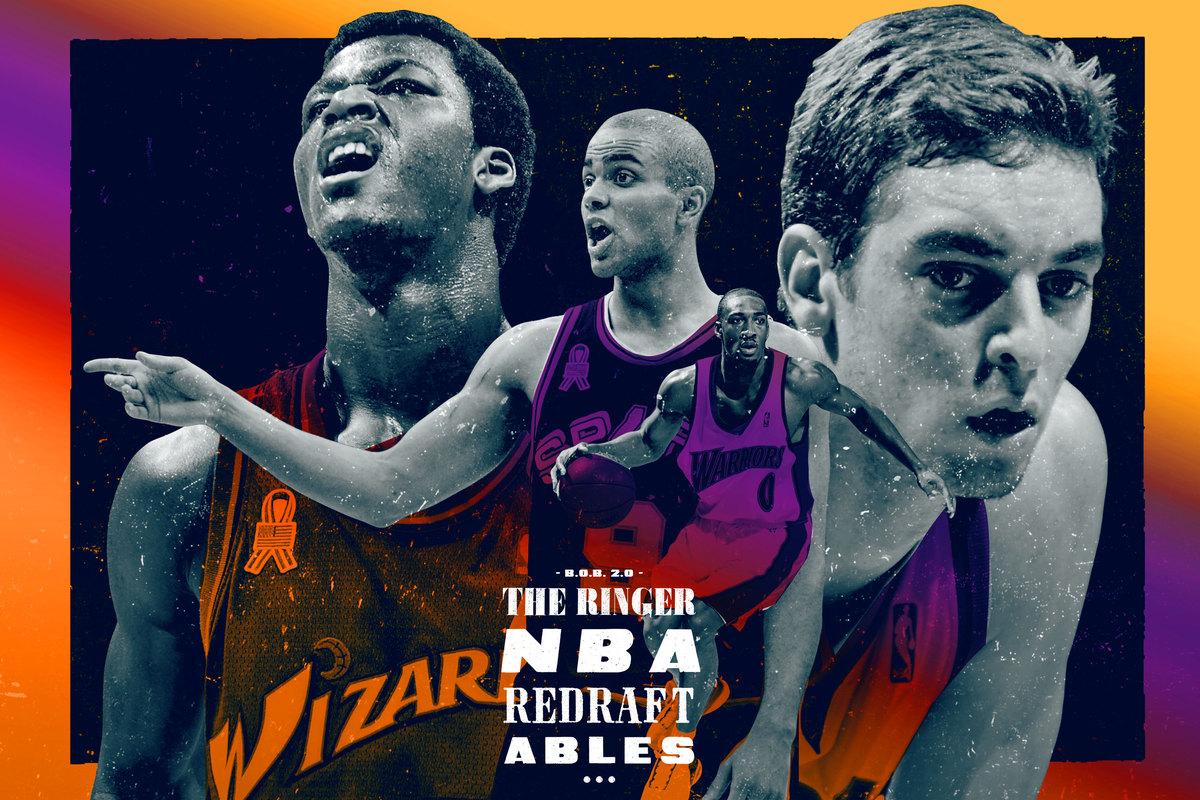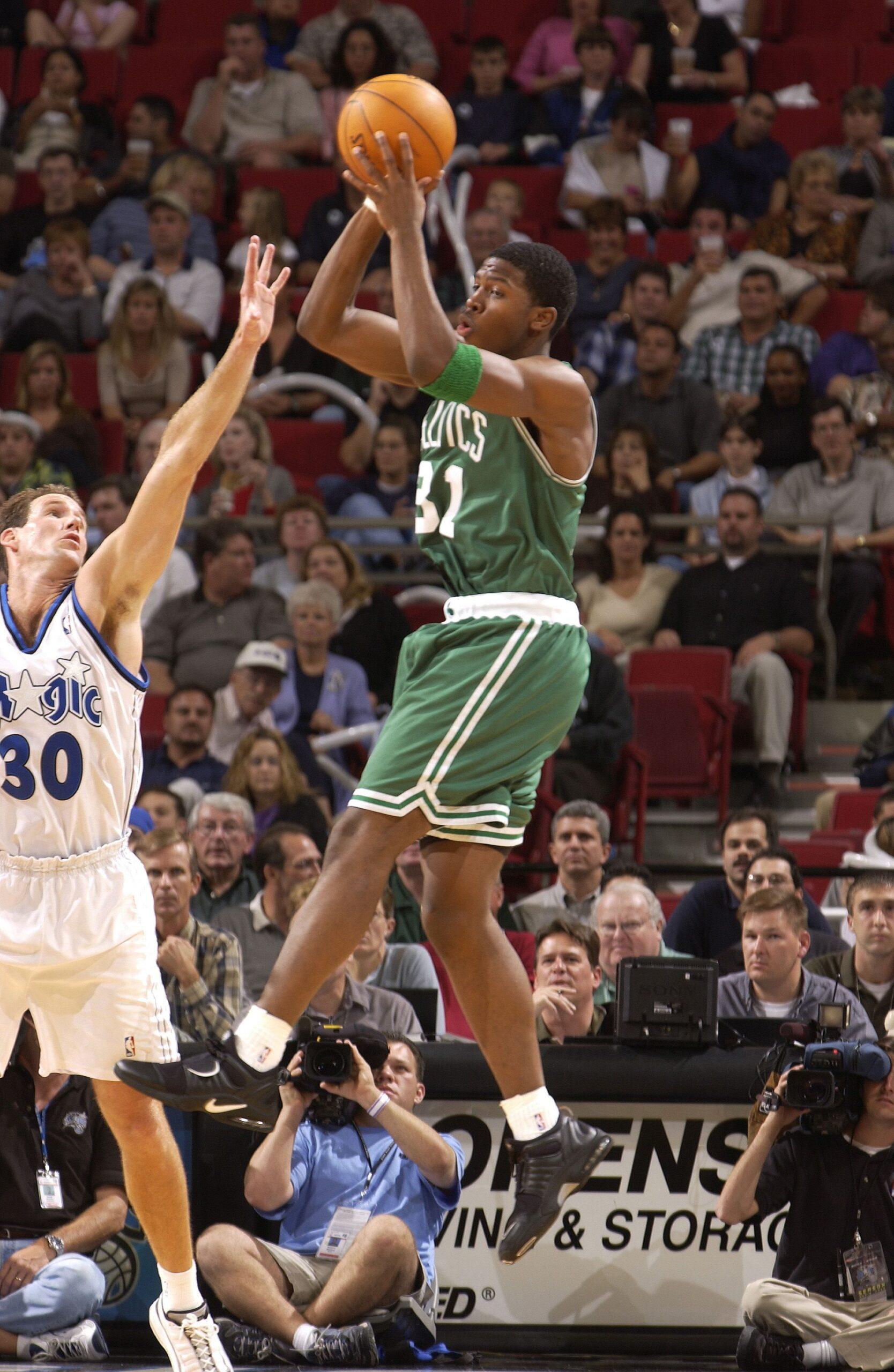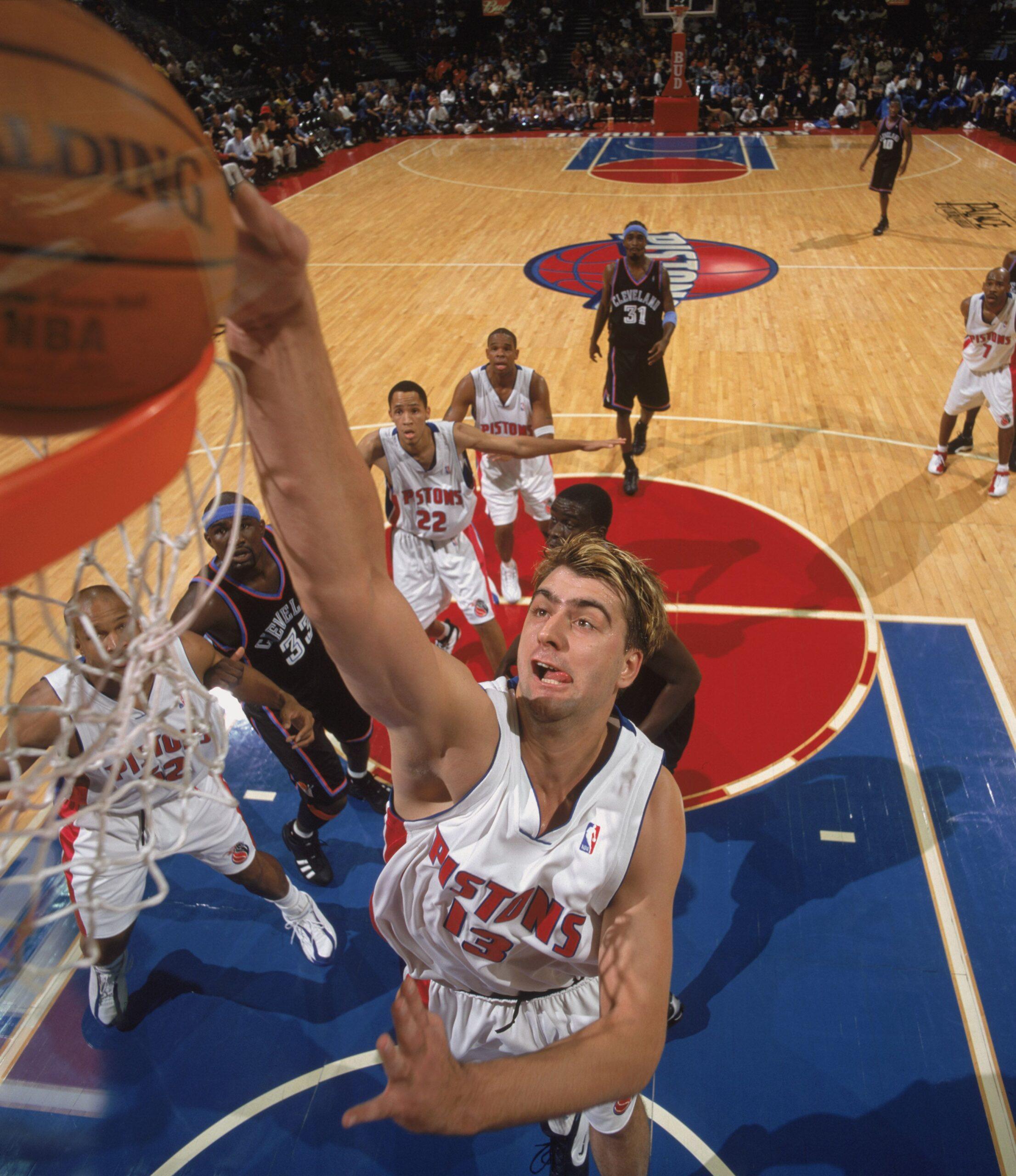
Draft season is here, even if the NBA season isn’t, so we’re taking a look back at some of the most interesting lotteries of the past 24 years. On the Book of Basketball 2.0 feed, Bill Simmons and a rotating cast are redrafting every pick 1-13/14, starting with 1996. Here, we’re going deep on what actually did happen by choosing the best, worst, and Knicksiest move of each class with the gift of hindsight, and also looking at how the numbers would re-rank the lottery board today. (For reference, here’s how the 2001 draft played out.)
Best Move
Tony Parker to the Spurs, no. 28
If you want to know why the Spurs are the most successful NBA franchise of the past quarter-century, look no further than these early Redraftables posts. We’ve awarded the Spurs “Best Move” for 1997 (Tim Duncan), 1999 (Manu Ginobili), and now 2001.
In addition to Parker, Pau Gasol, selected no. 3, has a real case for the best pick in the draft. The regular-season numbers suggest he had the best peak and the best overall career for any 2001 draftee. He also served an important transformational role for the NBA at large. At the time, Gasol was the highest-picked player ever to come to the NBA straight from an international league, and his immediate success—he averaged 18 points and nine rebounds per game, winning Rookie of the Year honors—helped pave the way for upcoming picks like Yao Ming, Darko Milicic, and Andrea Bargnani, picked first, second, and first, respectively.
(After the relative failures of Milicic, Bargnani, and 2002’s no. 5 pick, Nikoloz Tskitishvili, the NBA cooled on international players at the top of the draft. Following Bargnani in 2006, the league waited 12 years to take another player from an international league in the top three—but Dallas is quite happy with Luka Doncic.)
But one key factor elevates the Spurs’ selection of Parker to this imaginary title. For as much as Gasol excelled individually with the Grizzlies—he was technically picked by Atlanta, before moving on draft night in a trade headlined by Shareef Abdur-Rahim—that team reached the playoffs three times in his tenure and lost in three first-round sweeps, dropping eight of 12 games by double digits. Meanwhile, with their French point guard, the Spurs won four titles, including one in which he earned Finals MVP honors.
Parker is the best no. 28 pick ever, with more career win shares than the second- and third-place players on that list (1975’s Dan Roundfield and 2003’s Leandro Barbosa) combined. Finding a future Hall of Famer at the end of the first round is a worthy achievement in and of itself; to cement a dynasty with such a move is even better. As Charles Barkley noted about the Parker pick on the draft broadcast back in 2001, “I don’t know that much about him, but if they got him in the first round, he must be a good player.” He was right.
Worst Move
Kwame Brown to the Wizards, no. 1
Three high school players have been no. 1 picks in the history of the NBA draft. With LeBron James (in 2003) and Dwight Howard (in 2004), two of those three are certain Hall of Famers. The other—and the first high schooler selected first overall—is Kwame Brown.
The 2001 draft was the first dominated by high schoolers. Before 2001, only Darryl Dawkins (no. 5 in 1975), Kevin Garnett (no. 5 in 1995), Jonathan Bender (no. 5 in 1999), and Darius Miles (no. 3 in 2000) had landed in the top five after skipping college. In this draft, however, three of the top four picks were big men from the prep ranks: Brown, Tyson Chandler, and Eddy Curry.
Yet Brown was tremendously unprepared for life in the NBA; as The Washington Post’s Sally Jenkins documented in a 2002 piece titled “Growing Pains,” “the Wizards have found themselves in the business of child rearing, of caring for a 6-foot-11 baby-man who has required far more careful handling and feeding than they bargained for.” Brown was skilled and athletic, a dream prospect; he also didn’t know how to eat right or do laundry, and his poor conditioning meant little injuries—back spasms, a sore hamstring—piled up and prevented the young big man from gaining any rhythm in a professional workout schedule.
That Michael Jordan, the team president who drafted Brown, chose to unretire to play for the Wizards in Brown’s rookie season complicated matters. “Now you didn’t have time to develop this kid; instead it was about making the comeback worthwhile,” Richard Lopez, Brown’s business manager, told Jenkins. “Now it was, we’ve got to go ballistic to get to the playoffs.” Defense is a challenge for any big man entering the NBA—especially so for a teenager who’d been able to use his raw athleticism to dominate in high school. And Brown wasn’t able to get the necessary reps to improve as the Wizards made a quixotic playoff push. (Jordan’s infamous treatment of Brown as a teammate didn’t help.)
Brown left the Wizards after four underwhelming seasons and bounced around six more teams for the rest of his career. Ultimately, he did well for himself as an NBA player, lasting 12 seasons and earning more than $60 million, more than half of which came after his initial rookie deal. Such was the tantalizing promise of a former no. 1 pick. But Brown registers as nothing more than a massive disappointment given the expectations of a top draft selection. Since the invention of the shot clock, he has the third-lowest scoring average for any no. 1 pick. Only Anthony Bennett (2013) and LaRue Martin (1972) were worse.
Most Underrated Move
Gilbert Arenas to the Warriors, no. 31
Even though the top pick flopped, the 2001 draft is one of the best thanks to its depth. Six 2001 draftees made at least one All-NBA team, tied for second in the lottery era (behind only 1996’s seven), and more beyond those six were valuable contributors with long careers.
Arenas didn’t manage that last part; he was out of the NBA by age 30, and even in his 20s lost time due to debilitating injuries and a suspension after bringing guns to the Verizon Center. But when he was able to play, he enjoyed arguably the highest individual highs for anyone in the 2001 draft—quite an accomplishment for a second-rounder. Looking just at peak value (defined here as the player’s five best seasons), Arenas was the second-best player from the 2001 draft, behind Gasol. Across his three consecutive All-NBA seasons, Agent Zero ranked second in minutes played (behind only LeBron James) and fourth in points per game (behind Kobe Bryant, Allen Iverson, and James). And his 2005-06 campaign is the best single-season effort for any Wizard, by win shares, since the franchise moved to Washington in the mid-’70s.
Before joining the Wizards, Arenas did enough for the Warriors that he even caused a change to the league’s collective bargaining agreement—a more singular accomplishment than scoring 60 points in a game or nailing game-winner after game-winner in D.C. Arenas was a solid bench player as a rookie, then a star in his second season, when he averaged 18 points, six assists, and five rebounds per game en route to winning the league’s Most Improved Player award. But due to salary cap rules at the time, the Warriors couldn’t match the Wizards’ six-year, $65 million offer for Arenas, who became a restricted free agent following his breakout season. Now, the so-called “Arenas Provision” in the CBA exists to prevent such a scenario from unfolding again.
Best What-if
What if the Celtics had done just about anything differently?
Three hypotheticals emerge from Boston’s 2001 draft, the franchise’s first after Rick Pitino’s midseason resignation.

1. Boston took Joe Johnson 10th, but—like with Chauncey Billups four years earlier—traded him midway through his rookie season, shipping Johnson, two benchwarmers, and a 2002 first-rounder to Phoenix for Tony Delk and Rodney Rogers. Delk and Rogers served as sixth and seventh men for an overachieving Celtics squad that reached the conference finals, so this trade wasn’t a total disaster—but Johnson now has a 50-50 shot to make the Hall of Fame, per Basketball-Reference’s estimator.
For the next half-decade after the Celtics traded Johnson, the team’s second-best perimeter player, after Paul Pierce, was Ricky Davis; then came a combination of Delonte West, Walter McCarty, Ryan Gomes, and Eric Williams. What trajectory would the club have traced with Pierce and Johnson together on the wings?
2. The Celtics also had the 21st pick in 2001, thanks to a four-team trade the year before. They appeared set on taking Parker, who received a Celtics hat from the NBA’s vice president of player development in anticipation of the pick. Only then, as Parker recounted years later, his hat was taken away because the Celtics swerved in a different direction. “The coach and the GM, they wanted me,” Parker said, “but the president, big boss, he changed his mind.”
The big boss was Celtics legend Red Auerbach, then 83 years old. He was enamored of UNC guard Joe Forte, who had recently been named the ACC’s co–Player of the Year. Celtics GM Chris Wallace said Forte was “Auerbach’s personal favorite player in the draft;” Auerbach himself called Forte an “ideal 2-guard.”
Forte played eight games in Boston, scoring six total points; in his entire NBA career, he managed just 25 games and 30 points.
3. The Celtics also enjoyed a third first-rounder in this draft. This one was a bit more confusing. In 1999, they’d nabbed a future Denver first with the following protections—and, notably, if the protections weren’t violated, Boston could choose whether to take the pick or roll it over to the next summer:
- Protected top-five in 2001
- Protected top-three in 2002
- Protected top-one in 2003
- Unprotected in 2004
When Denver’s pick slotted at no. 11 in 2001, Boston had the choice of taking that pick or waiting to see if it could improve upon that position the next year. At this point, the Nuggets had been one of the league’s worst teams for half a decade, but they boosted their record to 40-42 in 2000-01, and Boston evidently reasoned that the Nuggets would improve even more the next few seasons. So the Celtics seized the 11th pick in 2001 rather than risk the pick dropping more later on.
Of course, Denver immediately declined. If Boston had deferred another year or two, it could have chosen the no. 5 pick in 2002 or the no. 3 pick—used on a touted college freshman named Carmelo Anthony—in 2003.
Boston squandered that potential opportunity, though, and ended up with the no. 11 pick in 2001. The Celtics used it on small forward Kedrick Brown, who averaged 3.6 career points per game across four NBA seasons and was out of the league by age 24.
So in a draft that saw the likes of Johnson, Richard Jefferson, Troy Murphy, Zach Randolph, Gerald Wallace, Parker, and Arenas all go 10th or later, the Celtics had three chances to benefit from that abundance of talent. Instead, they ended up with two duds and one stud—and traded the latter within a year.
How the Knicks Screwed Up
The Knicks didn’t have a first-round pick in 2001—they’d traded their own first-rounder (that became no. 18, Jason Collins) in the four-team Patrick Ewing trade the previous year, then traded a different first-rounder they acquired (that became no. 27, Jamaal Tinsley) to the Grizzlies for Othella Harrington.

New York had two second-round picks, however, which could have been valuable given the 2001 draft’s depth. The Knicks picked 39th and 43rd, and Mehmet Okur went 38th, while future NBA mainstays Earl Watson and Bobby Simmons went 40th and 42nd, respectively.
Instead, the Knicks used their two picks on Arizona forward Michael Wright and Kansas center Eric Chenowith. They combined for zero career NBA games. Put another way: Only three of the top 45 players picked in the 2001 draft didn’t end up playing in the NBA. Two of those three were selected by the Knicks.
In-Hindsight Draft Board
Using a mix of two all-encompassing statistics—Basketball-Reference’s win shares and FiveThirtyEight’s RAPTOR wins above replacement—we calculated the peak and career value for each player drafted (and undrafted) since 1996. (Peak value comprised the top five seasons of a player’s career.) Then, for each class, we ranked the players in three ways: by peak value, by career value, and by an ultimate blend of the two, using baseball’s JAWS model as an example. The first chart shows the top 13 players according to these rankings, while the second looks at the lottery picks that didn’t make the cut. An important caveat is that all of these rankings address regular-season performance only; feel free to mentally adjust placements based on playoff exploits.

